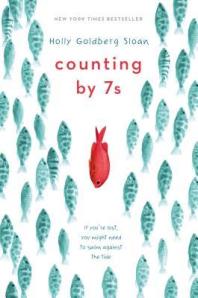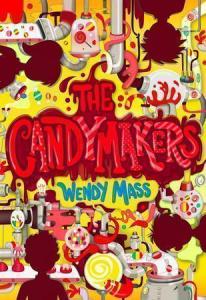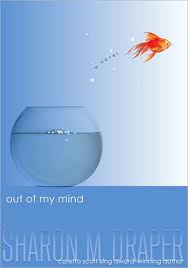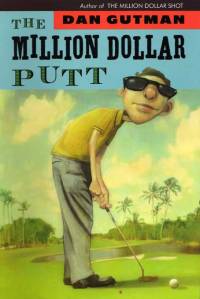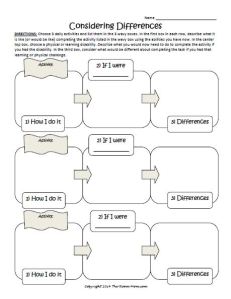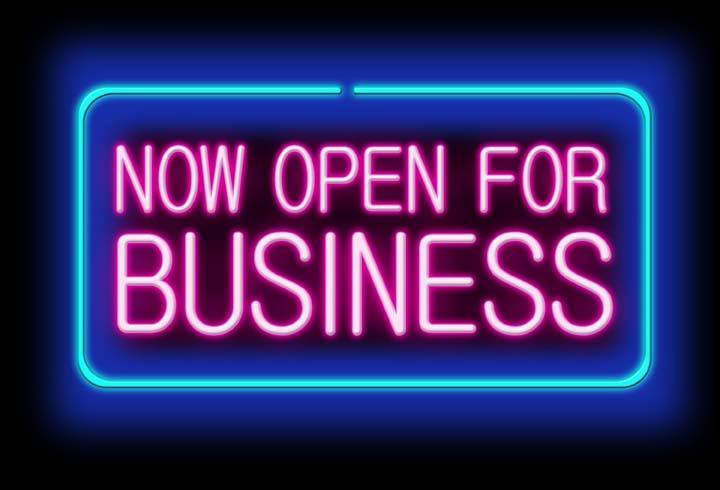Visit and follow our blogs for a reminder August 4th!
Blasting Back to School: Win a $50 Teachers Pay Teachers Gift Card & More!
Sunday, July 27, 2014
Visit and follow our blogs for a reminder August 4th!
Sunday, July 13, 2014
Reading a story is one way to travel by imagination to a new location or try an activity that a child might not otherwise have the opportunity to experience. Reading stories can also be an avenue for understanding another's person situation and developing empathy. I will never know what it is like to be blind or deaf or struggle with a reading disability, but I can read a book with characters who do have these differences and gain an appreciation for their challenges. I can also recognize similarities between my life and these characters and develop a connection to them.
Sharing books in class that have characters with physical disabilities or learning differences give students an opportunity to see a diverse range of people. This topic is as important as sharing information about different cultures and backgrounds.
It is harder to locate books that include characters with disabilities. Until recent years, there were not that many choices. Look for books that have been given the Schneider Family Book Award. This is an award given to juvenile literature that incorporates a disability experience in some way.
Below is my starter list of books that have a character with a difference. It is not always a main character, and it is not always revealed at the beginning of the story. Are there other books that work well for upper elementary and middle school students that I should add to the list?
Character with Physical Differences
- The Candymakers by Wendy Mass
- Deenie by Judy Blume
- A Dog Called Homeless by Sarah Lean
- Gathering Blue (and any Giver companions) by Lois Lowry
- Hate That Cat by Sharon Creech
- Hurt Go Happy by Ginny Rorby
- The Million Dollar Putt by Dan Gutman
- The Running Dream by Wendelin Van Draanen
- A View from Saturday by E.L. Konigsburg
- Wonder by R.J. Palacio
- Wonderstruck by Brian Selznick
Characters with Learning Differences
- Al Capone Does My Shirts by Gennifer Choldenko
- Counting by 7s by Holly Goldberg Sloan
- Freak the Mighty by Rodman Philbrick
- Hank Zipzer series by Henry Winkler
- Mango-Shaped Space by Wendy Mass
- Navigating Early by Clare Vanderpool
- Out of My Mind by Sharon M. Draper
- Fish in a Tree by Lynda Mullaly Hunt
Many of the titles on my list make me cry, but they are so good, I read them anyway-- even if it means shedding a tear in front of my students. I have found one humorous realistic fiction book that works well for reluctant upper elementary readers and is tissue free. The Million Dollar Putt by Gutman is about a blind kid who is a natural at golf. He attends his local school and is in regular ed classes. This is a great book to share with students and offers many opportunities to discuss differences in friends, classmates, or any people we encounter in our daily lives.
If you use one of these books in your classroom this year, follow up with this Characters with Differences Activity Page, which asks students to think about how daily activities change when you live with a challenge. To purchase materials related to The Million Dollar Putt, Click Here.
Caitlin Tobin
Thursday, July 10, 2014
I'm super excited to start the first of a series of posts on how I use Thinking Maps (graphic organizers) in my classroom to teach about the American Revolution. 5 things you should know about Thinking Maps--
1. They provide students with a way to visualize and make sense of new content.
2. If you teach them early in the year, students begin to use them independently.
3. They are great for interactive notebooks. Seriously great.
4. You don't have to make copies to use them. Pencil, paper, done.
5. You can use them with all content. Check out my Thinking Maps board on Pinterest for some ideas.
Let's start with the Brace Map. Brace Maps show part to whole relationships. When teaching the Declaration of Independence, I love to have my 5th graders start with the primary source. The actual document. It's quite overwhelming at first glance. Fancy language and unfamiliar words abound! So, I start by drawing the skeleton of the map, showing students that we can look at the Declaration of Independence in four parts. Then, we are able to read through and stop, summarize, and connect to what we've learned about the events leading to the American Revolution. Check it out, below!
Come back soon for more on using Thinking Maps to teach about the American Revolution.
--The Pensive Sloth
Blog
Facebook
Pinterest
1. They provide students with a way to visualize and make sense of new content.
2. If you teach them early in the year, students begin to use them independently.
3. They are great for interactive notebooks. Seriously great.
4. You don't have to make copies to use them. Pencil, paper, done.
5. You can use them with all content. Check out my Thinking Maps board on Pinterest for some ideas.
Let's start with the Brace Map. Brace Maps show part to whole relationships. When teaching the Declaration of Independence, I love to have my 5th graders start with the primary source. The actual document. It's quite overwhelming at first glance. Fancy language and unfamiliar words abound! So, I start by drawing the skeleton of the map, showing students that we can look at the Declaration of Independence in four parts. Then, we are able to read through and stop, summarize, and connect to what we've learned about the events leading to the American Revolution. Check it out, below!
Come back soon for more on using Thinking Maps to teach about the American Revolution.
--The Pensive Sloth
Blog
Wednesday, July 9, 2014
I promised my teenager a trip to the store
yesterday, and I entertained myself looking for school supplies while trying to
ignore what she was picking out to try on.
I mean, why raise my blood pressure until I absolutely have to do
so?
We hit Target, which honestly is about the only
store we ever get to……and I think I spent 10-15 minutes at the Dollar Spot
inside the door. Then I moved on the
toys and games for the 4th grader, and managed to find a game for
school, and then finally we hit the summer clearance. I had half a cart for me! But look at what I found:
To be fair, I found the small crates (and big
ones) at WalMart.
Let me tell you how I plan to use all of these items.
US Maps – $1 – Target Dollar Spot – If you are like me and have zero classroom maps, these are just fabulous – and cheap. I bought 12 and plan to laminate them in order to make them “dry erase” maps. The maps do have the state names and capitals on them, but in 5th grade we do landforms, waterways, etc., so this will be a terrific hands on tool.
Megaphone - $1.40 on clearance in the summer aisle
– Target – Well, some of us are not blessed with loud whistles, and honestly,
it was just cool (and loud.)
Packs of Erasers - $1 – Target Dollar Spot – My
kids told me to get the packs of ice cream and crayon erasers. There were also apples. I plan to use these as cheap rewards.
Dictionaries - $1 Target Dollar
Spot – Okay, I know you are thinking, dictionaries? However, they also had thesaurus and rhyming
dictionaries. (For Spanish teachers,
they have Spanish-English dictionaries.)
I bought a rhyming dictionary and thesaurus for each table group.
Campbell’s Soup Alphabet Game - $7
– Target Game Clearance – I totally do not intend to play this as the
game. It comes with 36 alphabet
dice. I am thinking of using this to
play Boggle on the doc cam.
Picnic Utensil Holder - $8 –
Target Summer Clearance – Depending on where you live, these may be hard to
find. My Target only had 2 left, but I
bought some last summer – they have them every year in different colors. These are metal, so they are a bit pricey –
that is why I try to catch them on clearance.
These are just the best organizers in the world. Seriously.
I reorganized my entire craft closet at home with them. I have one on my desk at school. This year I plan to try table groups, and I
am going to put a number on each one and keep the table supplies in it:
pencils, highlighters, scissors, glue, thesaurus, rhyming dictionary, etc.
Crates – small $1, large $3.50 –
WalMart – They had at least 5 colors of the mini-crates and many more of the
large ones. I used the small ones to
organize my classroom library last year, and I actually ran out of space. Apparently, this size is hard to find after
the college supplies are gone. For $1,
grab as many as you think you will need, and then add a few more. I use the large ones for everything. I use one for a library book return, one for
portfolios, one for “to be copied,” etc.
Have you found any great deals
for back to school? What is your best
classroom organization tip?
Amy Mezni
Tuesday, July 8, 2014
As teachers (and tutors) we've been trained to recognize and differentiate according to student needs, including their individual learning styles. But how important is it for our students to understand their learning styles? I'd love to hear your thoughts on this one, so please, sound off in the comments below.
Here's an interactive lesson you can use with your kiddos. They will take a self assessment and then learn about their strongest learning styles. This should prove to be an invaluable tool in your teaching/tutoring repertoire!
http://www.educationworld.com
Once you AND your students have a good understanding of their learning styles, you can tailor your lessons to meet their needs. Here are a few links I've found that might help you design lessons to reach your students from their perspective!
For your spacial and kinesthetic learners kinestheticlearningstrategies.com
Have an auditory learner successfulteaching.blogspot.com
How about some ideas for your visual learners brighthubeducation.com
I learned that my oldest child is a naturalist and it was hard for me as a logical learner to find ways to accommodate her, I wish I would have found this page 10 years ago! education.jhu.edu
Do you have a go-to-site you'd like to share with us? Please post your link in the comments below!
| Found on Pinterest |
Here's an interactive lesson you can use with your kiddos. They will take a self assessment and then learn about their strongest learning styles. This should prove to be an invaluable tool in your teaching/tutoring repertoire!
http://www.educationworld.com
Once you AND your students have a good understanding of their learning styles, you can tailor your lessons to meet their needs. Here are a few links I've found that might help you design lessons to reach your students from their perspective!
For your spacial and kinesthetic learners kinestheticlearningstrategies.com
Have an auditory learner successfulteaching.blogspot.com
How about some ideas for your visual learners brighthubeducation.com
I learned that my oldest child is a naturalist and it was hard for me as a logical learner to find ways to accommodate her, I wish I would have found this page 10 years ago! education.jhu.edu
Do you have a go-to-site you'd like to share with us? Please post your link in the comments below!
Thanks
for stopping by!
Stefany (Interactive Learning with Miss Stefany)
Monday, July 7, 2014
Welcome to our weekly Member Spotlight! Each week I will be interviewing one of our fabulous contributing members. We have a variety of contributors that teach in many different states and grade levels. Today you will be meeting Amy Mezni, who shares her teaching ideas on Teaching Ideas 4U.
1. How many years have you been teaching?
It is hard to believe, but this coming year will be my 20th year. I started my first year of teaching in 1995!2. What do you currently teach?
After leaving elementary, going to middle school, then teaching online middle & high school, I am back in 5th grade and loving it!
3. Describe your teaching style.
Work hard, play hard. (Ok, I try to live up to this.) I prefer to teach using hands on materials and in thematic units. We work hard - I push my kids to do more than they think they can - but then once we work hard, we also play hard, scheduling a whole day of corn activities for Thanksgiving or a whole day of special valentine activities on Valentine's Day. (We are still learning, but it doesn't seem like learning....)
4. What is one activity in your classroom you tried that you fell in love with?
Civics Interactive Notebook I really had to think about this, because my class really enjoyed the book report projects and the novel units we did. However, the activity that really surprised me was my Civics Interactive Notebook. I actually created this for my daughter and her 7th grade class, but as 5th grade civics loops up to 7th grade civics, I was able to use parts of it with my class. The kids loved it. They no longer complained about taking notes, and every day they would ask what we would do tomorrow! The 7th grade notebook is finished, but making another one geared specifically for 5th grade is on July's to-do list!
5. What is one piece of advice you can offer to a new teacher?
Great advice from Amy Mezni! Follow the links below to see some more of her wonderful ideas!Be yourself. As a new teacher, you often find yourself asking veteran teachers for advice, but sometimes you will get advice that just isn't "you." Some of my biggest regrets as a teacher are times I followed advice from other people that just didn't feel right to me. Learning isn't a one-size fits all activity, and neither is teaching.
Thursday, July 3, 2014
I don’t know about you, but I love to play with LEGO bricks
probably more than most of my students do.
I wanted to use them in my class for math and science, but couldn’t
figure out how to easily store them. At
the craft store, I saw organizers for the ever popular Rainbow Loom bracelet
stuff and inspiration hit! I bought 6 of
them to use for Lego brick storage (one box per table group).
Once I sorted out the bricks, I had a variety of wheels, windows, doors, etc. I decided to divide those pieces up and include them for possible STEM activities. Lego has also been sending me emails about using the bricks to plan writing activities, so I included a few people. The uses for Lego bricks are endless! I just love them.
I bought a few Lego kits on clearance and sorted them by size
of brick. Then I grouped them by
color. Well, I tried to group them by
color, but I did end up having to use multiple colors in many cases unless I
wanted to buy a lot more Lego kits…..which I didn’t. I plan to use my kits for fraction work, so I
decided that I wanted to set up the kits with multiples of bricks. For example, for 1 2 x 12 brick, I would need
3 2 x 4 bricks. Therefore, plan to use
many more of the smaller bricks than the bigger bricks.
Once I sorted out the bricks, I had a variety of wheels, windows, doors, etc. I decided to divide those pieces up and include them for possible STEM activities. Lego has also been sending me emails about using the bricks to plan writing activities, so I included a few people. The uses for Lego bricks are endless! I just love them.
Before I take the kits into the classroom, I plan to vinyl
my name and “Table X” in the lids. You
can find vinyl letters in the craft aisle at a well-known big box store and in
craft stores.
When I use these with the kids, I will make sure to give
them time to play first – and enforce the rules of separating the bricks back
in the correct locations when finished.
How do you use Lego bricks in the classroom? Do you have a terrific storage idea? If you do, please share!
Amy Mezni
Labels:
brick,
class,
classroom organization,
education,
elementary,
LEGO,
math,
science,
storage,
teaching
Welcome to the Lesson Delicatessen Collaborative Blog
From how to set up workshops in the upper grades to great books to read with your class, we hope that the tips and strategies that we share will be useful to you! We already have a lot of useful and fun things in the works, so make sure that you follow us so you don't miss out on some great content!
If you would like to learn more about the individual contributors, please click {here}. If you would like to follow us on social media, here are our links to {Facebook}, {Pinterest}, and {Twitter}.
Follow our blog with Bloglovin
Subscribe to:
Comments (Atom)


